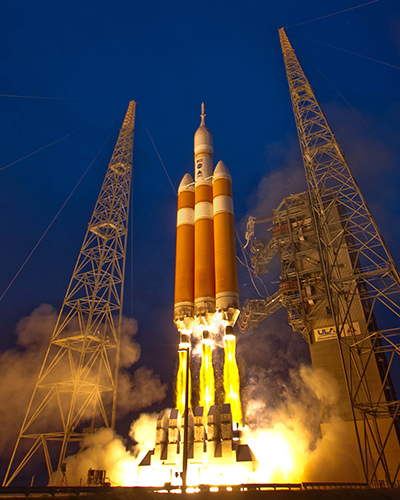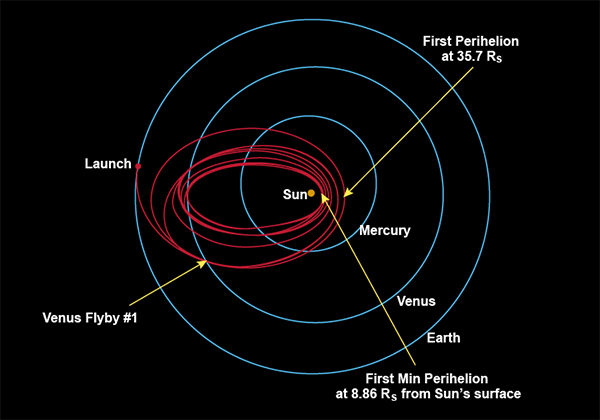The Mission
NASA's Parker Solar Probe mission will revolutionize our understanding of the Sun.
Where is Parker Solar Probe? Learn more »
Parker Solar Probe will swoop to within 4 million miles of the Sun's surface, facing heat and radiation like no spacecraft before it. Launched on Aug. 12, 2018, Parker Solar Probe will provide new data on solar activity and make critical contributions to our ability to forecast major space-weather events that impact life on Earth.
In order to unlock the mysteries of the corona, but also to protect a society that is increasingly dependent on technology from the threats of space weather, we will send Parker Solar Probe to touch the Sun.
In 2017, the mission was renamed for Eugene Parker, the S. Chandrasekhar Distinguished Service Professor Emeritus, Department of Astronomy and Astrophysics at the University of Chicago. In the 1950s, Parker proposed a number of concepts about how stars—including our Sun—give off energy. He called this cascade of energy the solar wind, and he described an entire complex system of plasmas, magnetic fields, and energetic particles that make up this phenomenon. Parker also theorized an explanation for the superheated solar atmosphere, the corona, which is – contrary to what was expected by physics laws -- hotter than the surface of the Sun itself.
It was the first time NASA had named a mission for a living individual. Parker died in March 2022, at age 94.

